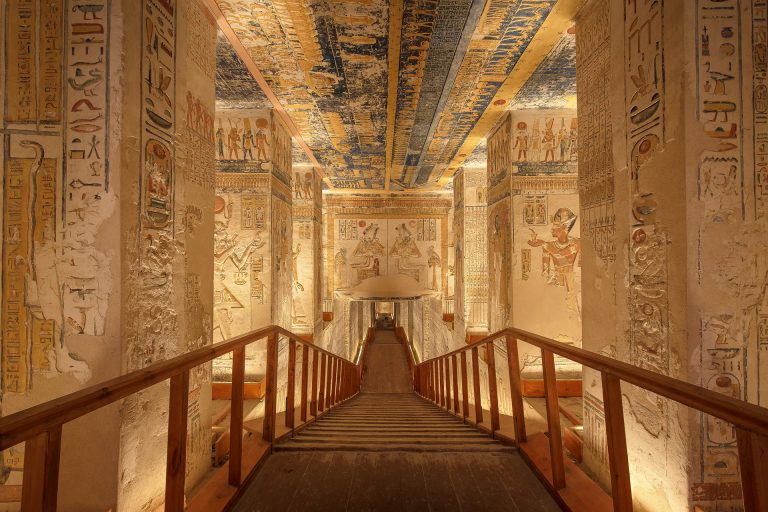
In Ancient Egypt, even death did not grant the deserved rest – or at least, not immediately. Before reaching Rostau, the glorious kingdom of Osiris, lord of death, the deceased had to undertake a sort of symbolic obstacle course in the Afterlife.
In other words, it was a journey to a new life, so dangerous that it deserved a written guide.
Its name is Book of the Two Roads, because of the two routes (by land or water) leading to Rostau. A fragment of this text was found in a sarcophagus at least 4000 years ago.
According to archaeologists, it is the oldest copy of this sacred text. Moreover, it may be perhaps the first known “picture book”.
The First Illustrated Book of History
The discovery actually dates back to 2012. A team of archaeologists from the Universities of Liverpool, UK, and Leuven, Belgium was conducting a series of excavations. They were in the necropolis of Dayr al-Barshā, an ancient cemetery for high-ranking personalities in use in the Middle Kingdom (2055-1650 BC). They decided to analyze a tomb ignored by previous archaeologists, since it had been clearly looted by grave robbers. Here the researchers found the remains of a wooden sarcophagus decorated with a series of hieroglyphics. Translating it, they understood that it was a sort of portable guide to the afterlife illustrated directly on the inner planks of the chest. In this position, in fact, it would be easily accessible to the deceased.
The instructions turned out – surprisingly – to be the remains of a copy of the Book of Two Streets. Although it is an incomplete version and not in “book” form, it is still the oldest one so far described in a scientific publication. The tomb dates back to the time of Pharaoh Mentuhotep II, who reigned until 2010 BC.
The guide is therefore at least 40 years older than all the other copies discovered since a century ago. Although there are other more archaic and simpler representations of the Egyptian Afterlife, the Book of the Two Streets describes it in a more complex and elaborate way. For this reason some scholars consider it “the first illustrated book” of History.
Instruction Booklet for the Afterlife
The newly discovered guide decorated the sarcophagus of a high-ranking woman named Ankh. The text, however, uses male pronouns to address her. This is an important detail to understand the origin of this text. According to the Egyptian religion, Osiris dominated the Afterlife in death. So the entire cult in his honor was about the possibility of bringing him back to life through sacred rites. The “instructions” contained in the Book of the Two Streets may have originated from religious ceremonies in which priests tried to revive Osiris through prayer. Only later, these same formulas would have been used for the common deceased, but keeping the male pronoun used for the deity.
In the general layout of the guide, however, there was still room for personalization. For example, during her journey, Ankh would have had to deal, according to the symbols, with a ring of fire, demons and spirits. The only way to defend herself against these threats were spells. The discovered fragment seems to contain specific instructions to formulate these spells.




